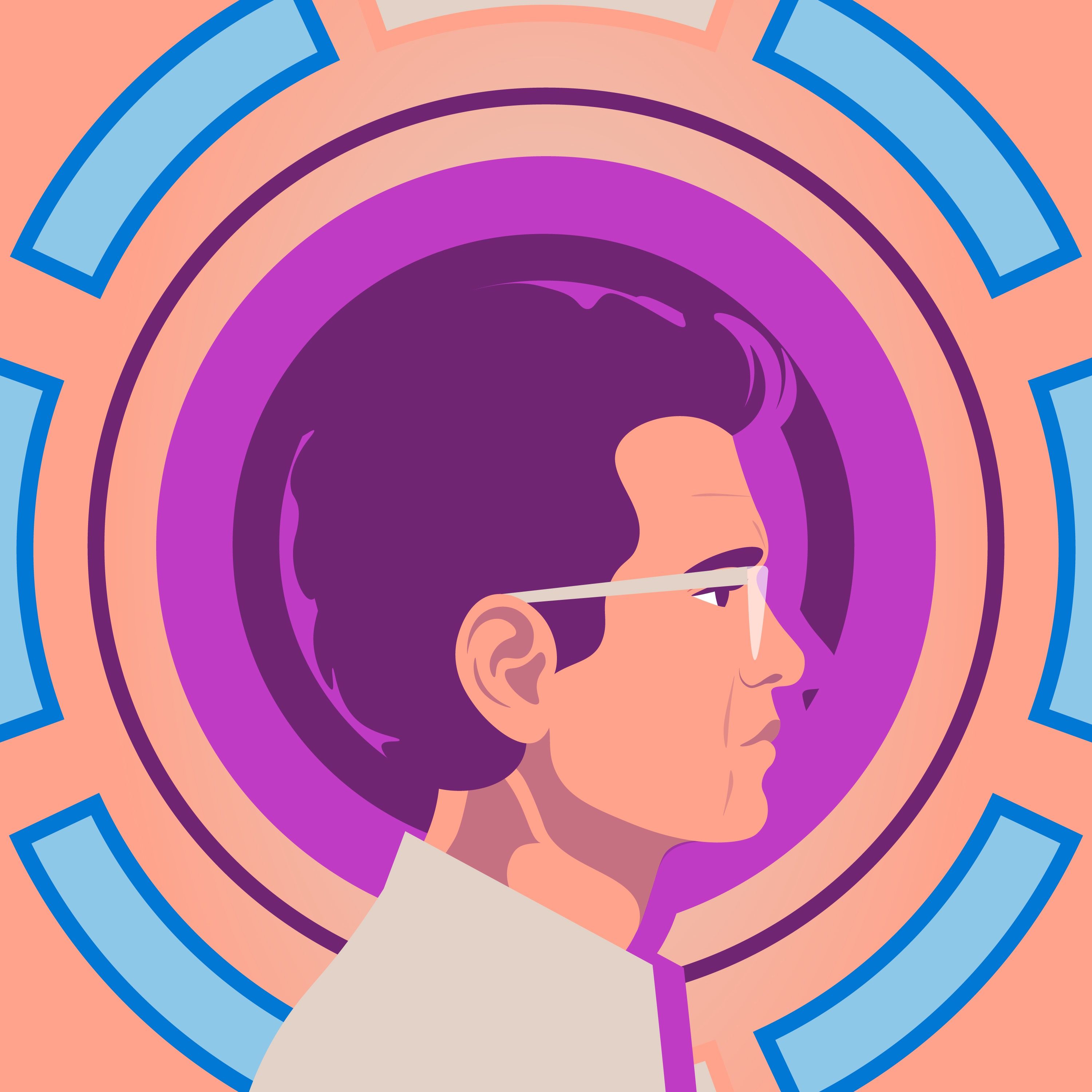Discover DDx
DDx

77 Episodes
Reverse
If you work in healthcare, you’ve felt it—that moment when communication breaks down. This season on DDx, we’re going inside hemophilia treatment centers—places where teamwork isn’t optional. It’s what holds everything together. You’ll hear stories from the people who do this work every day—how collaboration really works, what it looks like in real time, and how filling gaps in communication helps ensure patients get the care they deserve. Coming soon, season 12 of DDx.
A man walks into his doctor’s office with flu-like symptoms—and walks out with a lung cancer diagnosis. What happens next opens up a broader conversation about early detection, access to screening, and the clinical nuances of treating non-small cell lung cancer.In this episode, Dr. Raj Bhardwaj brings you a candid discussion between oncologists Dr. Sanjay Juneja and Dr. Eric Singhi. They unpack a real patient case and explore the practical, diagnostic, and systemic challenges that shape lung cancer care today.
This is a trailer for a special bonus episode of DDx—not part of Season 12.While we work on our next season, we’re bringing you a powerful standalone case: a patient arrives with flu-like symptoms—but the diagnosis is something far more serious.In this bonus episode, Dr. Raj Bhardwaj brings you a conversation between two leading oncologists, Dr. Sanjay Juneja and Dr. Eric Singhi, as they unpack a case that challenges assumptions and reveals how great clinicians think through the unexpected.Stay tuned—the full episode drops soon.
Last time, we spoke with the co-creator of DAX Copilot, Dr. Jared Pelo, about what DAX can actually do and the questions it raises about AI and the future of medicine. But today, we’re not just continuing that conversation—we have news. Dr. Pelo is back to share a major development, and talk about what this news means for physicians, patients and the future of clinical practice.
“Every physician has thought this idea. Every physician has thought, I should not have to write my own notes.” Dr. Raj Bhardwaj sits down with Dr. Jared Pelo, the co-creator of DAX Copilot, to delve into the origins and future of the AI-powered clinical documentation solution. Discover how DAX Copilot aims to revolutionize medical workflows, the challenges it faces, and the potential it holds for transforming patient care. Join us to hear insights from the creator himself on the evolving role of AI in healthcare and what lies ahead, as Dr. Pelo candidly addresses questions about AI accuracy, patient privacy, and the future integration of AI in healthcare. Episode guest:Dr. Jared PeloLinkedIn: https://www.linkedin.com/in/jared-pelo-b849026/
Join us as we sit down with Colorado-based allergist and immunologist Dr. Robert McDermott, who has seen first-hand what an AI-powered solution can do for care providers at facilities of all scales. Dr. McDermott offers his unique perspective as someone who has integrated DAX Copilot as a documentation assistant at both a small clinic as well as a hospital. He delves into why and how, at each scale, he has seen the investment pay off for the providers, patients, and facility alike. For Dr. McDermott, the ability to give physicians on his staff hours of their day back, on top of the ease of integrating the new-age technology, swiftly quashed any early skepticism regarding his investment. Listen in to hear why! Episode guest:Dr. Robert McDermott
“There's so many downstream effects of having people work in an inefficient environment.” Dr. Alfred Atanda, a pediatric orthopedic surgeon, shares his experiences dealing with inefficiencies in a clinical environment and the stress that results. Every day in his practice, he sees how broken workflows ripple out—straining providers and the patients who rely on them. Dr. Atanda highlights how DAX Copilot, an AI-powered solution, aims to simplify doctors' workflows by recording patient visits and automatically drafting medical notes, potentially improving efficiency and patient care. Dr. Atanda highlights the benefits and limitations of using DAX Copilot.Episode guest:Dr. Alfred Atanda
“If I’m running on empty, I can’t be the doctor my patients deserve,” said Dr. Theresa Nguyen. Dr. Nguyen, who is the Chair of Pediatrics at Greater Baltimore Medical Center and leads the Medical Staff Wellness Committee, joins us to discuss the culture of wellness at the workplace for physicians. She opens up about her own personal journey dealing with the stress of perpetual burnout, delving into the impact on her life not only as a physician, but also as a mother and human being. For Dr. Nguyen, utilizing the capabilities of an AI assistant like DAX Copilot is about much more than just being efficient in the workplace. Episode guest:Dr. Theresa NguyenLinkedIn: https://www.linkedin.com/in/drtheresanguyen
We sit down with Dr. Patrick McGill, who shares his experiences and challenges as Chief Transformation Officer at Community Health Network and as a family doctor at South Indy Family Practice in Indianapolis, Indiana. Dr. McGill discusses the growing disconnect between doctors and patients due to administrative tasks and required documentation, which often take away valuable time and focus from patient care. Dr. McGill discusses his initial skepticism about integrating AI-powered solutions and his eventual relief, both personally and professionally, upon using the cutting-edge technology to help restore human connections in his practice. Episode guest:Dr. Patrick McGillLinkedIn: https://www.linkedin.com/in/patrick-mcgill-mdX: @pmmcgill
Imagine a world where doctors spend more time with patients—and less on paperwork.
This season on DDx, we explore DAX Copilot, an AI assistant that listens to doctor-patient conversations and drafts notes for medical records. We’re asking doctors what it’s really like to use this technology. Does it help? Does it get in the way?
And what does it mean for the doctor-patient relationship when AI is in the room too?
Real stories from the frontlines of healthcare. Season 11 of DDx is coming soon.
After a lifetime of treating her rare bone disease, X-linked hypophosphatemia, a patient is at the end of her rope. Due to a genetic variation of the X chromosome — specifically the PHEX gene — there’s an imbalance of phosphate levels in her body. Because of its domino effect on bone development and mineralization, the patient is in pain, she’s frustrated, and nothing seems to help. So when a clinical trial opportunity presents itself, Dr. Suzanne Jan de Beur, a professor of medicine and the Chief of Endocrinology and Metabolism at the University of Virginia, is unsure the patient will want to participate. While the decision to participate is surprising, the results of the clinical trial are astonishing.
It’s a summer day and a 45-year-old is out for a drive. As she accelerates her stick-shift car, she starts to experience familiar, and scary, symptoms: facial tingling, numbness around her mouth, and a sharp pain in her hands. Her hands cramp and lock onto the steering wheel. Fortunately, she makes it home safely, but it will take many wrong turns and the help of Dr. Google to determine a diagnosis of hypoparathyroidism, a rare bone disorder. Dr. Michael Mannstadt, the Chief of the Endocrine Unit at Massachusetts General Hospital and Associate Professor in Medicine at the Harvard Medical School in Boston, shares this patient’s story and how a clinical trial changed this patient’s life.
A local pool in the summer is teeming with kids. A 9-year-old does a cannonball into the shallow end. As she surfaces, a stab of pain shoots through her hip. As days pass, what seems like a straightforward bump takes a complicated turn. Dr. Edward Hsiao, an endocrinologist and Director of the UCSF Metabolic Bone Clinic at the University of California, describes how after discovering a new bone growth at the site of the pain and several rounds of major (and unsuccessful) interventions, the child is diagnosed with fibrodysplasia ossificans progressiva. This extremely rare bone disorder has a devastating impact on a patient’s life. But thanks to unexpected areas of research, patients have new reasons to hope.
In an examination room, an ultrasound technician moves a wand over a patient’s belly. The patient is 20 weeks pregnant. Usually, these appointments bring good news, but the news this day is devastating: the baby’s bones are broken and bowed. Despite this, the baby is born and does well. After testing, all signs point to hypophosphatasia for Dr. Eric Rush, a clinical geneticist at Children’s Mercy Hospital and the University of Kansas Medical Center, and an Associate Professor of Pediatrics at the University of Missouri-Kansas City, who shares this patient’s story. And thanks to the life-changing treatment of enzyme replacement therapy, today, this child and many others with this rare bone disease are living happy, healthy lives.
In a bustling maternity ward, an infant has a case of newborn hiccups. But this quickly transforms into labored breathing. A chest X-ray unravels an unexpected discovery – calcium deposits around her shoulder. Follow-up tests paint a complex picture, revealing narrowed blood vessels and widespread calcifications. Genetic testing confirms a grim diagnosis: generalized arterial calcification of infancy, or GACI, a rare genetic condition with a challenging prognosis. Nearly half of infants don't survive beyond six months. But as Dr. David Weber, a pediatric endocrinologist and the Medical Director for the Center for Bone Health at the Children's Hospital of Philadelphia, shares, a revolutionary clinical trial could potentially transform this child's life and the lives of others with this disease.
On a December morning, a 62-year-old goes for a walk. There’s snow on the ground and she loses her balance. She falls and fractures her wrist. This simple fracture reveals underlying osteoporosis, requiring lifelong (and expensive) medication. But as you’ll learn from Dr. Richard Eastell, an endocrinologist and professor of Bone Metabolism at the University of Sheffield, this is where biosimilars come in. Biosimilars are extremely similar — hence the name — to the original biological drug they're designed to imitate. The excitement around biosimilars is that they’re cheaper, making them more accessible to more people, meaning fewer fractures … better health … a better economy … and ultimately, a better quality of life.





















The first season or two were excellent focused on medical decision making. this season is a long ad for an AI product. i am no longer subscribing.
I love this podcast, please please keep up the fantastic work! I couldn't listen to them fast enough!
Excellent and intriguing presentation